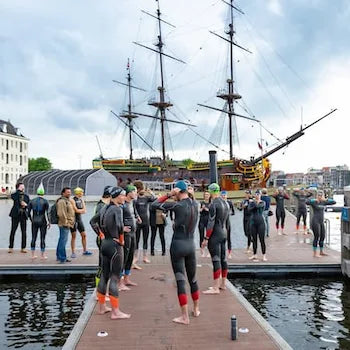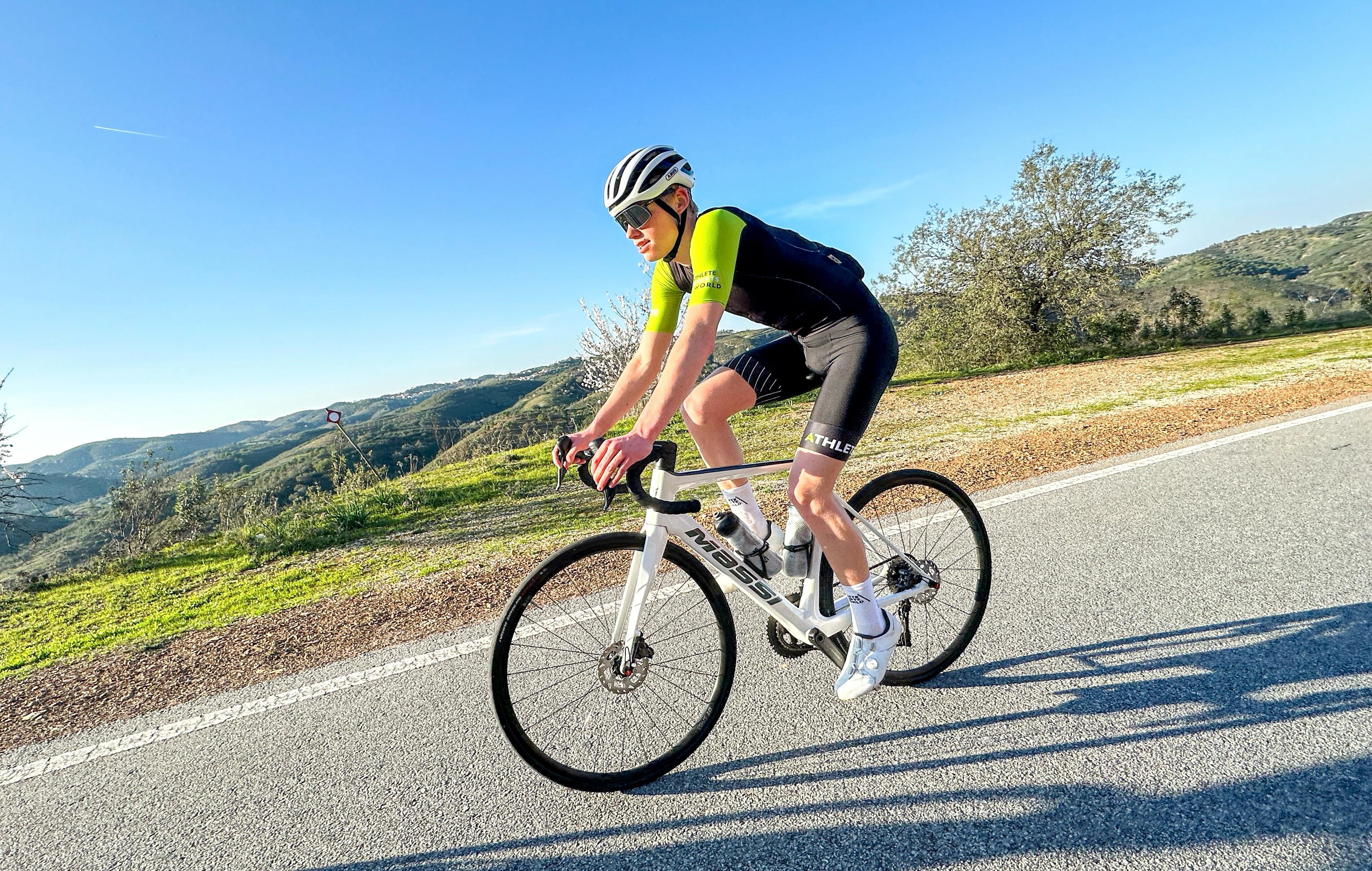From which water temperature can I swim open water?
The temperature is higher and that means that the open water swimming season has started again! A much -discussed subject under open water swimmers and triathletes is from which water temperature can you actually swim outside safely?
Of course the water temperature when you can swim per person will vary, because one can stand cold water better than the other. The very personal how the body reacts to cold water temperatures. However, everyone must feel for themselves from which temperature it is "comfortable" enough to enter the open water
As a guideline, we maintain that swimming in open water is possible from at least 13 degrees Celsius. However, this is of course with the right experience, guidance and materials.
Before you jump into the water, there are a number of aspects that you have to take into account. Think of your own safety. The greatest danger of swimming in cold water is the effect of the cold on your body. Due to the cold, a number of problems can arise during swimming such as hypothermia, cramps or in very serious cases a "cold" shock. Even after swimming, your body can react violently because it is still responding to the cold that the net has experienced.
To be able to swim, there are a number of guidelines that you have to meet.
Open water swimming - 6 practical tips
- Make sure you Body lets the cold get used to For example, by gradually going into the water. Do not go swimming for too long. The colder it is, the shorter you can go. You can also get your body used by, for example, showering cold at home. See also this nice test of Tim van 3athlon.nl
-
Always check the water temperature. Know what awaits you. The current water temperatures can be found on the website ofRijkswaterstaat† Also on Swimming water.nl Can be found a lot of information.
- Make sure you have the right materials to swim with. Hereby is a good one Open Water Swimming Tutsuit very important. For the lower temperatures in the Netherlands you can also have an extra Thermal Wetsuit purchase. This is recommended if you swim around 10-12 degrees Celsius in water, especially if you want to swim longer pieces. The use of neoprene swimming gloves, neoprene socks and a neoprene swimming cap is also recommended.
The Neoprene gloves and socks are there in different variants where the thick variant (Heat Tech variant) really closes the cold. The disadvantage is that the "water feeling" is lifted. The "lighter" variant also provides an insulation low (less than the Heat Tech variant) and will also protect the hands well against, for example, sharp objects and edges in the water.
Don't forget a special one Open water swimming glasses to use. For open water training, choose swimming goggles with good anti-fog lenses that do not cover like theZone3 Vapour goggles With polarized lenses.
To keep your head warm is one Neoprene swimming cap recommended. This protects your head against the cold water.
An indispensable item in the open water swimming is the swimming pool† This is connected to your waist via a "Leach". This buoy drives behind you and ensures that other users of the water can see you well. The swimming buoy also gives you buoyancy if you get tired and/or get cramps. An additional advantage is that you in Most swimming cuffs can take your wallet and key with you.
-
Try to swim together with someone (at an appropriate distance) Or ask a friend to keep an eye on you from the side. If something happens then there is always someone who can sound the alarm and help you. Another option is to ask if someone can paddle with it in a canoe/boat.
-
Find a piece of water that is not too deep† Shallow water has a higher temperature and the advantage is that you can possibly be easy if you get tired or get a cramp. To find shallow water you can think of various puddles and lakes.
- Practice navigating while swimming. In a swimming pool you have a nice line that you indicate exactly where you are, when you have to turn and whether you swim straight. You don't have this in the open water. There are 2 techniques to navigate.
a. During breathing. Look forward quickly before you breathe and look for your orientation points
b. Separate from breathing. Look forward and lift your head out of the water so that you are alone until your glasses are out of the water. After 2 strokes you normally pick up your rhythm again. The general guideline can be looked around around 10 strokes.
Should I not go swimming open water after everything I have read? Certainly!
Swimming open water gives you a huge sense of freedom. Enjoy swimming in the open air and enjoy nature. A natural environment gives you a lot more inspiration, sensation and satisfaction than a swimming pool. It is wonderful in the open air and you can swim longer distances in succession.
Are you going to swim in the sea? Please note that there are other dangers such as current than swimming in a puddle, channel or lake.
Extra tip: bring a thermos bottle with lukewarm warm water and pour it into your wetsuit just before you go into the water.
Extra tip 2: Take a thermos bottle (a one other than the above) and fill it with lukewarm hot tea so that you can heat up quickly after swimming. Warm clothing and a towel are therefore also very important.
Test a wetsuit yourself? It is possible to from the showroom of AthleteSportsWorld Test a wetsuit in the open water of a side channel of the Amstel. Only take your swimwear with you, and we take care of the hot tea/coffee and towel for afterwards.







